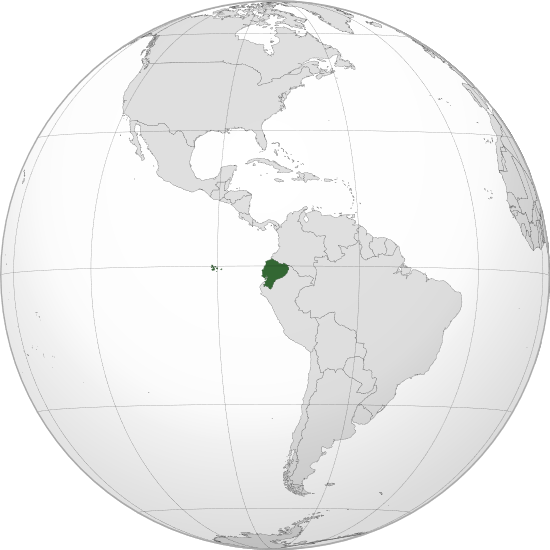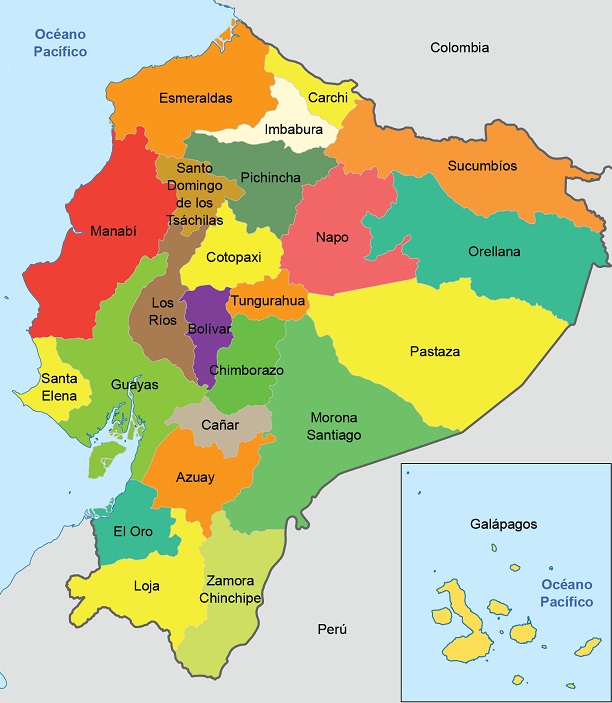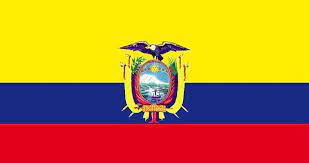ECUADOR INFO



The country also includes the famous Galapagos Islands in the Pacific, 962 kilometers (600 miles). Ecuador extends over the Equator line, so it takes its name. It is one of the 17 most mega diverse countries in the world.
Capital: Quito: Latitud 0° 13’47.5” S; Longitud 78° 31’29.8” W”; Altura: 2.800 msnm; Población: 2´872.151 (2022)
We are a Republic with representative democracy in South America, bounded by Colombia to the north, Peru to the east and south, and the Pacific Ocean to the west.
Official languages: Spanish and Quichua
Denomination: Ecuadorian
Mone : US Dólar
President: Guillermo Lasso 2021-2025
Area: 256,370 Km2
Population: 18’228,809 (2022) Density: 66 inhabitants per km². GDP: $ 17.988 million
Time zone: UTC-5; Galapagos UTC -6
Basic salary: 425 dollars (2022)
International calling code: +593
Internet TLD: .ec Networks: Facebook, Instagram, Twitter, WhatsApp, Pinterest, Google
Cellular Service: Claro, Movistar, CNT.
GEOGRAPHY AND CLIMATE
Ecuador has four geographical regions: Coast or Littoral, Sierra or Inter-Andean Region, East or Amazon, and the Insular or Galapagos Region.
• The Coastal Region: includes the lowlands of the west of the country from the foothills of the mountains to the beaches.
• The Interandean region or Sierra, is a belt of hills, mountains, volcanoes, snow-capped mountains and valleys that extends from north to south through the center of the country, its terrain is called Cordillera.
• The Oriente or Amazonia comprises the areas of the jungle in the lower eastern part of the mountain range, representing just under half of the total area of the country, although they are populated by less than 5 percent of the population.
• The Insular region that includes the Galapagos Archipelago.
The most representative of our country are the Galapagos Islands, the volcanoes (22; 15 actives), the jungle, the indigenous communities (14 nationalities and 18 villages), and the colonial centers of some cities, among thousands of other attractions. Among the most famous snow-capped volcanoes are the Cotopaxi, which is located south of Quito and is one of the highest and most beautiful active volcanoes in the world, with 5,897 meters, and the Chimborazo, whose peak at 6,263 meters is the point more distant from the center of the Earth, given the ovoidal shape of the widest planet in the equator, at 6,384 kilometers and 415.98 meters, 2000 meters more than Everest.
Although the country is not particularly large, there is a great variety in the climate, largely determined by the altitude. The Pacific coastal area has a tropical climate, with a severe rainy season. The climate in the Andean highlands is mild and relatively dry; and the Amazon basin shares the climate of other rainforest areas.
Due to its location, Ecuador experiences little variation in daylight hours over the course of a year.
BIODIVERSITY
Ecuador is one of the most diverse countries in the world according to Conservation International, with 1600 bird species (15 percent of the world’s known bird species) in the continental area; and 38 more endemic species in the Galapagos. In addition to 25,000 species of plants, 6000 species of butterflies. It also has about 3,800 species of vertebrates, 1,550 species of mammals, 350 reptiles of which 106 are endemic, 375 amphibians of which 138 are endemic, 800 species of freshwater fish and 450 saltwater fish.
The Galapagos Islands are well known as a region of distinct fauna, famous as the birthplace of Darwin’s Theory of Evolution and World Heritage by UNESCO.
DEMOPHRAPHY
The population of Ecuador is ethnically diverse. The groups are: Mestizos 80% Indigenous 7%, Afros 7%, Whites 6%.
CULTURE
Ecuador’s dominant culture is defined by its Mestizos majority and, like its ancestry, is a mixture of European (Spanish´s) and Amerindian influences fused with African elements inherited from enslaved ancestors. The indigenous communities of Ecuador are integrated into the dominant culture to varying degrees, but some may also practice their own native cultures, particularly the most remote indigenous communities in the Amazon basin.
Spanish is spoken as the first language by more than 90 percent of the population, and as the first and second language by more than 98 percent. A part of the Ecuadorian population can speak Amerindian languages, but only as a second language. However, there is a small portion of the rural population – 2 percent – who speak only Native American languages because they have never attended school.
FOODS
The variety of food if it is extremely diverse and according to the geographical site, the height, the time of the year, perhaps impossible to list, but possibly the most famous is the Ceviche, made of shrimp, octopus, fish, shell and even chochos, with tomato sauce, lemon, mustard and paiteña onion. Pork, chicken, cow and guinea pig meats are popular in mountainous regions and are served with a variety of grains (especially rice, corn or potatoes). A popular street food in the mountainous regions of Ecuador consists of potatoes served with roast pork. Fanesca, a fish soup that includes many types of beans, is often eaten during Lent and Easter. During the week before the commemoration of the deceased or “Day of the Dead”, the “Colada Morada” fruit drink is typical, accompanied by “Guaguas de Pan”, which is bread stuffed in the shape of children.
The food is somewhat different in the southern mountainous area, with typical Loja food such as “repe”, a soup prepared with green bananas; “cecina”, roast pork; and “honey with quesillo” or “curd” as dessert.
A wide variety of fresh fruit is available throughout the country; Banana, papaya, orange, tangerine, ovos, granadilla, apples, curls, grapes, pears, watermelon, claudia, mango, strawberry, blackberry, avocado, custard apple, taxo, sapodilla, guaba, melon, naranjilla, capulí, cherry, peach, pineapple, mamey, currant, soursop, guava, lemon, lime, grapefruit, cane, mortiño, tree tomato, babaco, coconut, quiwi, fig, nut, badea, borojó, chontaduro, achotillo
Seafood is very popular on the coast, where prawns, shrimp, lobster, shell and crab are key parts of the diet, and fish is basic. Banana and peanut-based dishes are the basis of most coastal meals, which are usually served in two dishes. The first dish is the soup of broth, which can be watered down (a thin soup, usually with meat) or broth, a vegetable cream soup. The second dish may include rice, some meat or fish with stew (lentil stew) and salad or vegetables. Patacones (fried green plantains with cheese) are popular side dishes with coastal meals.
Some of the typical dishes of the coastal region are: ceviche, starch bread, corviche, guatita, onions and empanadas; in the mountainous region: baking, frying, humitas, tamales, llapingachos, sauteed loin and churrasco.
In the rainforest, a staple food is cassava. The starchy root is peeled and boiled, fried or cooked and served with almost all other food in the country. Many fruits are available in this region, such as bananas, tree grapes and peach palm trees. It is also used as bread and has spread throughout the country, especially to Quito, where native cassava bread has a new meaning; Different types sold with frozen yogurt.
Spirituals are never lacking, the typical Ecuadorian is the Sugarcane Brandy, but you can get drinks such as Rum, Whiskey, Vodka, Gin and Wines, the popular drink is the National Beer
TRANSPORT
Planes, small planes, buses, taxis, motorcycle taxis, bicycles, train, and from January 2023 the Quito Metro
